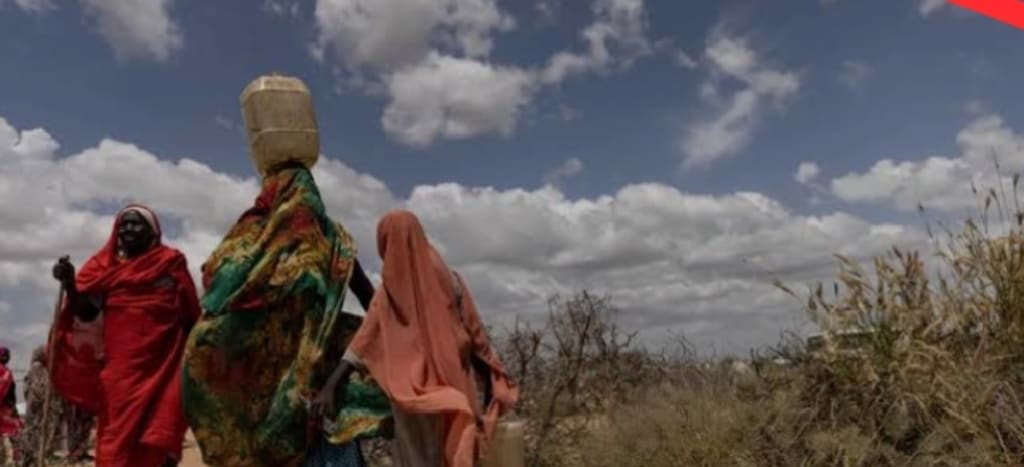
In a small coastal town nestled between rugged cliffs and the relentless ocean, Emma grew up surrounded by the rhythmic crashing of waves against the shore. The sea was her playground, her solace, and her livelihood, as it had been for generations of her family. But as Emma matured, the familiar sights and sounds began to shift in unsettling ways.
The signs of climate change crept into Emma’s world gradually at first. Warmer winters meant fewer days of icy winds and frost-covered docks. Storms that once seemed seasonal became more frequent and intense, battering the coastline with furious winds and punishing waves. Each year, the tides encroached a little further inland, swallowing up beaches and eroding cliffs that had stood firm for centuries.
Emma’s father, a weathered fisherman with a face etched by years of sun and salt, noticed the changes too. “Something’s not right, Emma,” he would say, his voice tinged with concern as he repaired nets that seemed to catch more plastic debris than fish. “The sea is angry, and we’re paying the price.”
The town’s elders gathered for heated discussions in the community hall, debating how to protect their homes and livelihoods from the encroaching sea. Some advocated for building higher seawalls or dredging the harbor to deepen it against storm surges. Others argued for stricter regulations on greenhouse gas emissions, pointing fingers at distant industries and governments.
As tensions rose, Emma found herself torn between the traditions of her community and the urgent need for change. She watched as her childhood friends moved away, seeking safer futures inland or in distant cities where climate change seemed less immediate. But Emma couldn’t abandon her connection to the sea, nor could she ignore the increasingly erratic weather patterns that threatened everything she held dear.
One stormy night, when the wind howled like a vengeful spirit and rain lashed against windows, Emma stood on the cliff overlooking the raging ocean. The waves crashed against the rocks below, sending plumes of spray into the air. She felt the raw power of nature, both awe-inspiring and terrifying, and wondered how her town could ever hope to withstand such relentless fury.
In the midst of her uncertainty, Emma found herself drawn to a group of activists who had set up camp on the outskirts of town. They were young, passionate, and fiercely determined to confront climate change head-on. They spoke of renewable energy, sustainable agriculture, and environmental justice with a fervor that ignited a spark within Emma’s heart.
She joined their cause, organizing beach cleanups and community workshops on climate resilience. Together, they planted mangroves to protect against coastal erosion and installed solar panels on public buildings to reduce reliance on fossil fuels. They lobbied local businesses to adopt eco-friendly practices and pressured politicians to prioritize climate action in their policies.
But change came slowly, and setbacks were frequent. Emma faced skepticism and resistance from those who feared economic upheaval or clung to outdated ways of life. The fishing industry struggled as fish stocks dwindled and ocean temperatures soared, forcing fishermen to venture farther from shore in search of their livelihoods.
Yet amidst the challenges, Emma discovered a resilience she never knew she possessed. She forged alliances with neighboring communities facing similar struggles, sharing strategies and resources to weather the storms together. She found hope in the small victories: a restored beach where children played once more, a protected wetland where migratory birds returned each year, and a community united in the face of adversity.
Years passed, and Emma watched as the world slowly began to heed the warnings of scientists and activists. Global agreements were reached to limit greenhouse gas emissions, and investments poured into renewable energy and climate adaptation projects. The town, once on the brink of surrender, found new life in sustainable tourism and innovative industries that respected the fragile balance between humans and nature.
As Emma stood on the cliff once more, overlooking a transformed landscape where wind turbines spun gracefully and coastal defenses stood strong against the rising seas, she felt a sense of peace. The ocean, though still mighty and unpredictable, no longer seemed like an adversary. It was a reminder of resilience, of the power of community, and of humanity’s ability to chart a new course even in the face of daunting challenges.
Looking out at the horizon where the sun dipped below the waves, Emma whispered a silent promise to future generations: that they, too, would inherit a world where the tides of change were met with courage, compassion, and unwavering determination.
And with that, she turned away from the sea, ready to continue her journey toward a more sustainable future—one small step at a time.
About the Creator
Enjoyed the story? Support the Creator.
Subscribe for free to receive all their stories in your feed. You could also pledge your support or give them a one-off tip, letting them know you appreciate their work.





Comments (1)
Wat a nice story